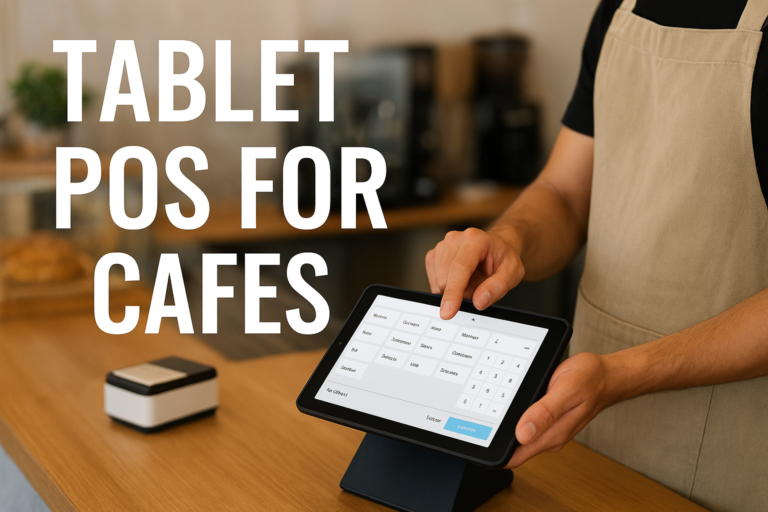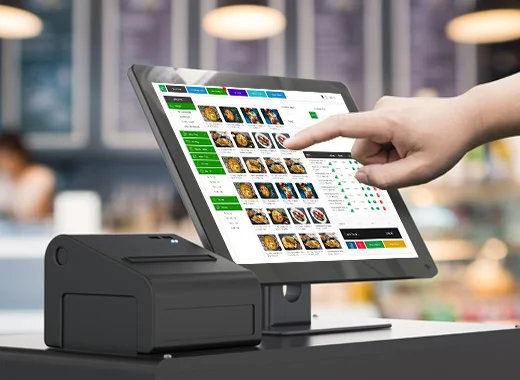Imagine walking into your store, knowing exactly what you have in stock and what’s flying off the shelves. You’re not just keeping track of your inventory; you’re mastering it.
With an Inventory Management System integrated with Point of Sale (POS), you can transform chaos into clarity. This isn’t just about managing products; it’s about unlocking efficiency, increasing profits, and enhancing customer satisfaction. Have you ever felt overwhelmed by the endless counting, tracking, and ordering?
An Inventory Management System with POS might just be your secret weapon. It’s like having a personal assistant that keeps everything in check, so you can focus on what really matters: growing your business. Dive into this article to discover how this powerful duo can revolutionize the way you operate, making your business smarter, not harder.

The Role Of Pos In Inventory Management
POS systems simplify inventory management by automatically updating stock levels after each transaction. They help track sales trends, reduce human errors, and maintain optimal inventory levels. Efficient POS integration ensures accurate stock data, facilitating better decision-making and improving overall business efficiency.
Inventory Management Systems with Point of Sale (POS) capabilities have transformed the way businesses handle their stock. With a good POS system, managing inventory becomes not only easier but also more efficient. It’s like having a smart assistant that ensures you never run out of stock or overstock. But what exactly is the role of POS in inventory management? Let’s dive in.
How Pos Systems Track Inventory
POS systems automatically update your inventory levels every time a sale is made. This real-time tracking helps you maintain an accurate count of your products. Imagine scanning an item at checkout and instantly knowing how many are left in stock. This reduces manual counting and human errors, saving you time and effort.
Streamlining Reordering Processes
A good POS system can alert you when stock levels are low. This feature is crucial for maintaining optimal inventory levels. It can even generate purchase orders for suppliers. One retailer mentioned how this feature allowed them to avoid costly stockouts during a holiday rush.
Providing Sales Insights
POS systems offer detailed sales reports that help you understand which products are selling well. You can see trends over time, like which items are popular during certain seasons. This information empowers you to make informed decisions about what to stock more of and what to discontinue.
Enhancing Customer Experience
POS systems can improve the shopping experience by ensuring popular items are always in stock. Imagine a customer returning to your store because they know you’ll have what they want. By aligning your inventory with customer demand, you increase satisfaction and loyalty.
Ensuring Accurate Financial Management
Accurate inventory tracking through POS helps in maintaining precise financial records. This is vital for assessing profit margins and overall business health. A friend once shared how they discovered a discrepancy in their financial reports, only to find it was due to inaccurate inventory tracking. A reliable POS system could have prevented this.
Integrating With Other Systems
Many POS systems can integrate with accounting, e-commerce, and other business tools. This integration streamlines operations and ensures all your systems are in sync. Consider the ease of having your inventory data automatically updated across all platforms. This connectivity eliminates double work and reduces errors.
Have you considered how a POS system could transform your inventory management? It might be time to explore its potential.
Key Features Of Modern Inventory Systems
Inventory management systems have evolved significantly, offering features that streamline operations and boost productivity. As a modern business owner, understanding these key features can transform the way you handle stock, sales, and analytics. Let’s dive into the essential components of contemporary inventory systems that can revolutionize your business approach.
Automated Stock Tracking
Imagine never having to manually count items or worry about discrepancies in your stock records. Automated stock tracking does just that. It uses technology to keep an accurate account of your inventory levels, updating them automatically as sales occur.
This feature not only saves time but also reduces human error. With automation, you gain peace of mind knowing your stock records are always accurate. Have you ever considered how much time you could save by not having to conduct manual inventory checks?
Real-time Data Analysis
Data is powerful, but only if it’s timely. Real-time data analysis gives you instant access to information about your inventory. You can see which products are flying off the shelves and which ones are gathering dust, allowing you to make informed decisions quickly.
Picture this: instead of waiting for weekly reports, you can adjust your strategy on the fly. This capability helps you spot trends and respond to them immediately. What would it mean for your business if you could pivot faster than your competitors?
Integration With Sales Channels
Today’s businesses often sell across multiple platforms, from physical stores to online marketplaces. Integration with sales channels ensures your inventory system communicates seamlessly with each of them, providing a unified approach to stock management.
This integration minimizes the risk of overselling or underselling, as your inventory levels are synchronized across all platforms. It also simplifies the task of managing sales data, helping you maintain consistency. Have you thought about how this integration could simplify your operations and enhance customer satisfaction?
These features are not just technological advancements; they are practical tools that can significantly impact your daily operations. Exploring their potential might be the key to unlocking greater efficiency and profitability in your business.
Benefits Of Integrating Pos With Inventory Systems
Integrating POS with inventory systems streamlines operations, reducing manual errors and boosting efficiency. Real-time data updates improve stock management, ensuring optimal inventory levels. Businesses save time and resources while enhancing customer satisfaction through accurate product availability.
Integrating a POS system with inventory management brings many advantages to businesses. This integration enables smoother operations and better control over stock levels. It also enhances decision-making processes by providing accurate and timely data. Businesses can optimize resources and improve customer satisfaction. Let’s explore the specific benefits of this integration.
Improved Accuracy
POS integration with inventory systems improves data accuracy. Transactions update inventory counts in real-time. This reduces human errors. Manual data entry mistakes decrease significantly. Accurate data helps in better forecasting. It prevents overstocking and stockouts. Businesses can maintain optimal inventory levels.
Enhanced Reporting
With POS and inventory systems together, reporting becomes more detailed. Businesses can access comprehensive sales data. They can identify trends and patterns easily. Reports help in understanding customer preferences. Businesses can make informed decisions quickly. This supports strategic planning and growth.
Streamlined Operations
Integrating POS with inventory systems streamlines daily operations. It automates various tasks, saving time. Staff can focus on customer service. The system handles inventory updates efficiently. It reduces the need for manual checks. Businesses experience smoother workflows. This leads to increased productivity and efficiency.

Choosing The Right Inventory Management System
Choosing the right inventory management system with POS is vital for business success. An effective system enhances efficiency, accuracy, and customer satisfaction. Understanding the key factors ensures a smart choice. Explore essential aspects to make the best decision for your needs.
Assessing Business Needs
Identify specific inventory challenges your business faces. Determine the types of products you sell. Consider seasonal fluctuations and storage requirements. Understand how many locations you manage. These factors guide your system choice.
Evaluating Software Options
Research available software solutions. Check reviews and user feedback. Look at software compatibility with your existing systems. Consider ease of use for staff training. Analyze the features that each software offers. Match them with your business needs.
Scalability Considerations
Plan for future growth. Assess if the system can handle increased inventory. Determine if it supports expanding to new locations. Review its ability to integrate with new technologies. Ensure it can adapt to changes in your business model. Scalability is key for long-term success.
Implementation Strategies For Success
Implementing an Inventory Management System with Point of Sale (POS) requires strategic planning. Success depends on understanding key components and executing them effectively. Proper implementation can streamline operations and enhance productivity. Businesses must focus on training, data migration, and performance monitoring.
Training And Support
Training is crucial for successful system implementation. It empowers staff to use the system efficiently. Conduct workshops and hands-on sessions. Provide comprehensive manuals and guides. Ensure ongoing support to address questions. Use online resources for remote training. Regular feedback improves training effectiveness.
Data Migration Tips
Data migration is a significant step. Start by cleaning existing data. Remove duplicates and errors. Organize data into logical categories. Use reliable software tools for migration. Test the system with sample data. Verify accuracy before full migration. Backup all data to prevent loss. Address any issues promptly to avoid disruptions.
Monitoring Performance
Monitoring ensures the system operates smoothly. Set clear benchmarks for performance. Use analytical tools to track key metrics. Identify trends and patterns. Regularly review system reports. Adjust processes based on performance insights. Feedback from staff can highlight areas for improvement. Ensure the system aligns with business goals.
Future Trends In Pos And Inventory Management
Technology evolves, and so does the world of POS and inventory management. Businesses need efficient systems to track and manage products. Future trends in POS and inventory systems promise more automation and improved accuracy. Key innovations include AI, mobile solutions, and cloud technology. These advancements aim to streamline operations and enhance customer experiences.
Ai And Machine Learning
AI improves inventory management by predicting demand patterns. Machine learning analyzes sales data to optimize stock levels. It reduces overstock and avoids stockouts. These technologies also automate routine tasks, saving time and resources. AI tools can suggest product placements for better sales.
Mobile Solutions
Mobile solutions allow access to inventory data from anywhere. Staff can check stock levels on smartphones or tablets. This flexibility improves customer service. Mobile POS systems speed up transactions, reducing wait times. They also enhance the shopping experience by providing quick access to product information.
Cloud-based Systems
Cloud systems offer scalability and easy access to data. Businesses can manage inventory without heavy hardware investments. Cloud technology ensures data is updated in real time. It reduces errors and improves coordination across locations. Security is also enhanced, protecting sensitive business information.
Frequently Asked Questions
What Is An Inventory Management System?
An Inventory Management System is a tool that helps businesses track and manage their inventory efficiently. It automates tasks like ordering, storing, and tracking inventory. This system enhances accuracy, reduces costs, and improves customer satisfaction by ensuring products are available when needed.
How Does Pos Integrate With Inventory Management?
POS systems integrate with inventory management by automatically updating stock levels after each sale. This seamless integration reduces manual errors and ensures real-time inventory tracking. It helps businesses maintain accurate stock records, streamline operations, and make informed purchasing decisions to meet customer demands effectively.
Why Is Inventory Management Important For Businesses?
Inventory management is crucial for maintaining optimal stock levels and reducing costs. It ensures products are available when customers need them, enhancing customer satisfaction. Efficient inventory management also minimizes waste, improves cash flow, and supports better decision-making in purchasing and sales strategies.
What Features Should A Good Inventory Management System Have?
A good inventory management system should offer real-time tracking, barcode scanning, and reporting tools. It should integrate with POS systems and support automated reordering. The system should be user-friendly, scalable, and customizable to meet specific business needs, enhancing overall operational efficiency.
Conclusion
Efficient inventory management boosts business success. POS systems simplify this process. They track sales and manage stock. Businesses save time and reduce errors. This leads to better customer service. Happy customers return and spend more. Inventory systems also help in planning.
They provide insights into buying trends. Owners make informed decisions. Choosing the right system is crucial. It should fit your business needs. Explore options and find the best match. Improve your operations today. A smart choice leads to growth. Embrace technology for better results.
Keep your inventory in check. Stay ahead in your industry.




